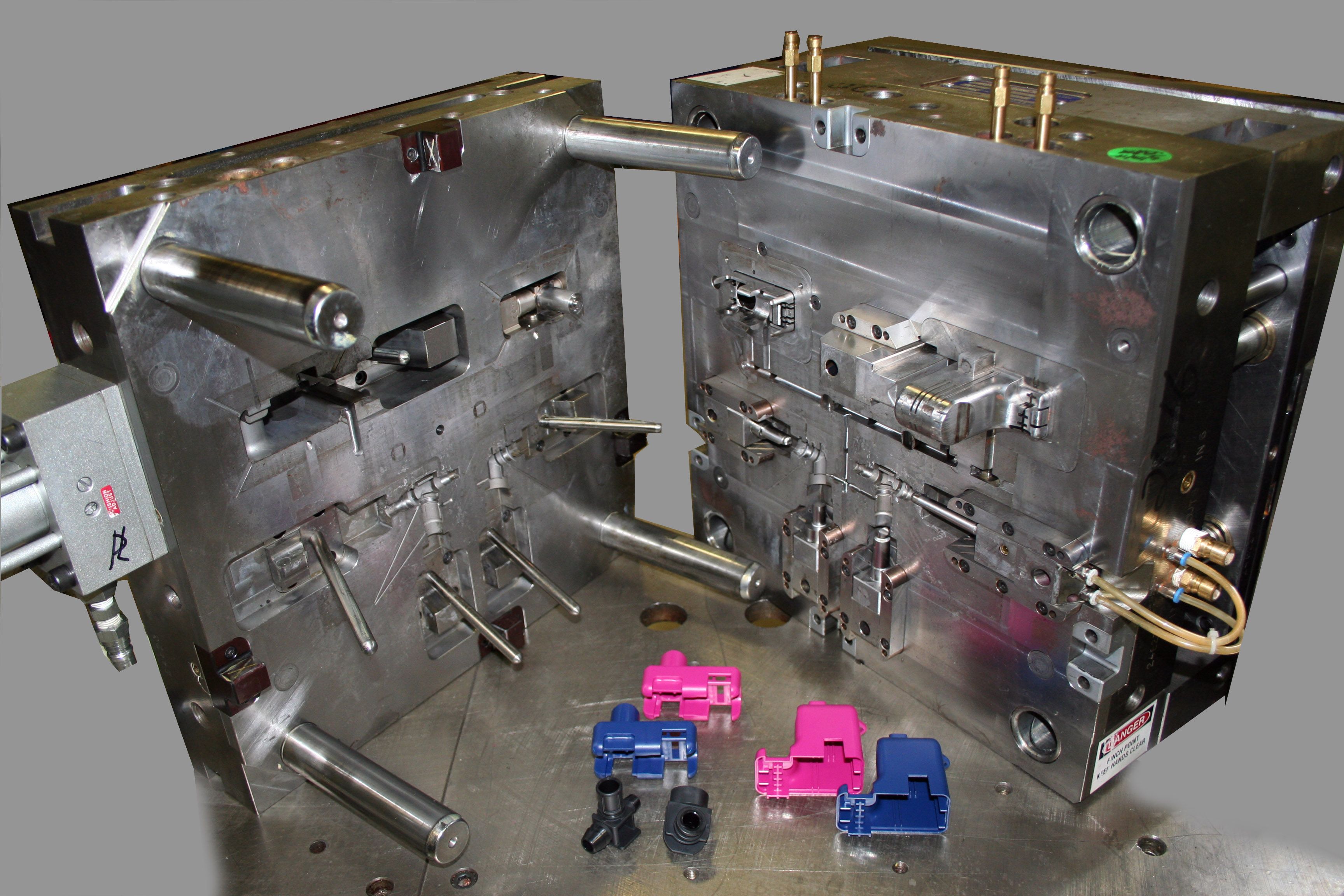
How to Manage Undercuts in Plastic Injection Molding
Designers may try to avoid undercuts in plastic injection molding, but undercut challenges are inevitable, especially when designing complex plastic parts. That's why your plastic injection molding partner needs to know how to design a mold to handle these undercut features that facilitate functionality and safety during the injection molding process.
Undercuts in Injection Molding 101
If you know how injection molding works, you likely already know that an undercut is a feature or shape on a plastic part that makes it tricky to remove from the injection molding machine. Imagine trying to pull a key out of a lock, but the key has a part that hooks onto the lock's interior. That hook-like shape on the key would be an undercut, making the part challenging to eject from the mold.
Undercuts are sometimes a necessary part of the plastic injection molding process. Making sure a mold designer and molder know how to handle undercuts to produce part features is critical.
With properly designed molds, there are several benefits of using undercuts, including:
- Enhanced design flexibility by allowing the creation of complex and intricate parts not available in simpler molds
- Reduced assembly requirements by minimizing the number of parts that need to be assembled
- Improved aesthetics by enabling seamless, hidden, or integrated features that enhance the overall look and feel of your finished product
- Reduced material waste by eliminating the need for additional fasteners or components
- Better customization by allowing manufacturers to tailor products to meet specific needs
- Space optimization by maximizing the use of available space within a part
The cost of undercuts can be higher than simpler designs since undercuts require more complex tooling. However, in many cases, these costs are offset through savings in material and labor required to assemble simpler parts.
Management Strategies for Undercuts
1. Through holes in a part
Depending on where the undercut is located, sometimes making a hole in the part allows for the creation of undercuts without the use of specialty tooling features. The hole allows tooling to come from both sides of the mold to form the undercut.
2. Part orientation
Sometimes, a single undercut or a few simple ones can be managed by orienting the part in the mold a certain way. In some cases, the part can be set on an angled parting line so that tooling from both sides of the mold can create the undercut feature. This is similar to through holes and works well for undercuts on the outside periphery of the part.
3. Two-part assemblies
Although not ideal, sometimes it can be more cost-effective to create a multiple-part assembly. This strategy allows you to eliminate undercuts by splitting these features into two or more parts, which can then be assembled after molding.
4. Specialty tooling
When the above strategies are not possible or desired, more intricate tooling components can be used. These tooling components will increase the tooling cost but will work well for managing a wide range of undercuts:
- Side actions are tooling components that move horizontally or perpendicular to the direction of the part ejection. This movement allows the tooling forming the undercut to move out of the way, relieving the undercut so the part can be ejected without damage.
- Lifters are specially shaped tooling components that move with the direction of the ejecting part, but at a slight angle, to allow the undercut to be relieved as the part is ejecting. Lifters are used for small undercuts where the tooling only needs to move a short distance.
- Collapsible cores are used mostly for undercuts on the inside of a part. The tooling is segmented and angled so that as the mold opens, the tooling can move inward and relieve the undercut. The part is then ejected with a separate tooling component. This is used mostly on threaded caps and other round parts with internal undercut features.
- Tunneled coring creates a hole in the part with a coring feature that moves perpendicular to the part ejection and is buried below the parting line of the mold.
Overcome Undercut Challenges With Crescent Industries
Crescent Industries handles all types of undercuts for plastic injection molding. Our expert designers create intricate designs that help your parts move through the manufacturing process with ease and meet all your injection molding requirements.
We create your custom plastic molds carefully, thoughtfully designed and excellently produced products. Plus, our manufacturing and design solutions help you scale up when you're ready. Contact us to find out how we can help you today.
Topics:
Related Articles
-
May 12, 2025
The Role of Hot Runners in Injection Molding
Read MoreBefore the invention of hot runner systems, manufacturers used cold runner injection methods. These...
-
Apr 23, 2025
How Long Does an Injection Mold Last? | Durability Factors
Read MorePlastic injection molds can manufacture custom parts in numerous industries with great accuracy and...
-
Apr 10, 2025
How Are Injection Molds Made for Plastic Manufacturing?
Read MoreDo you have a part design and need an injection mold built? Are you interested in finding a tooling...

